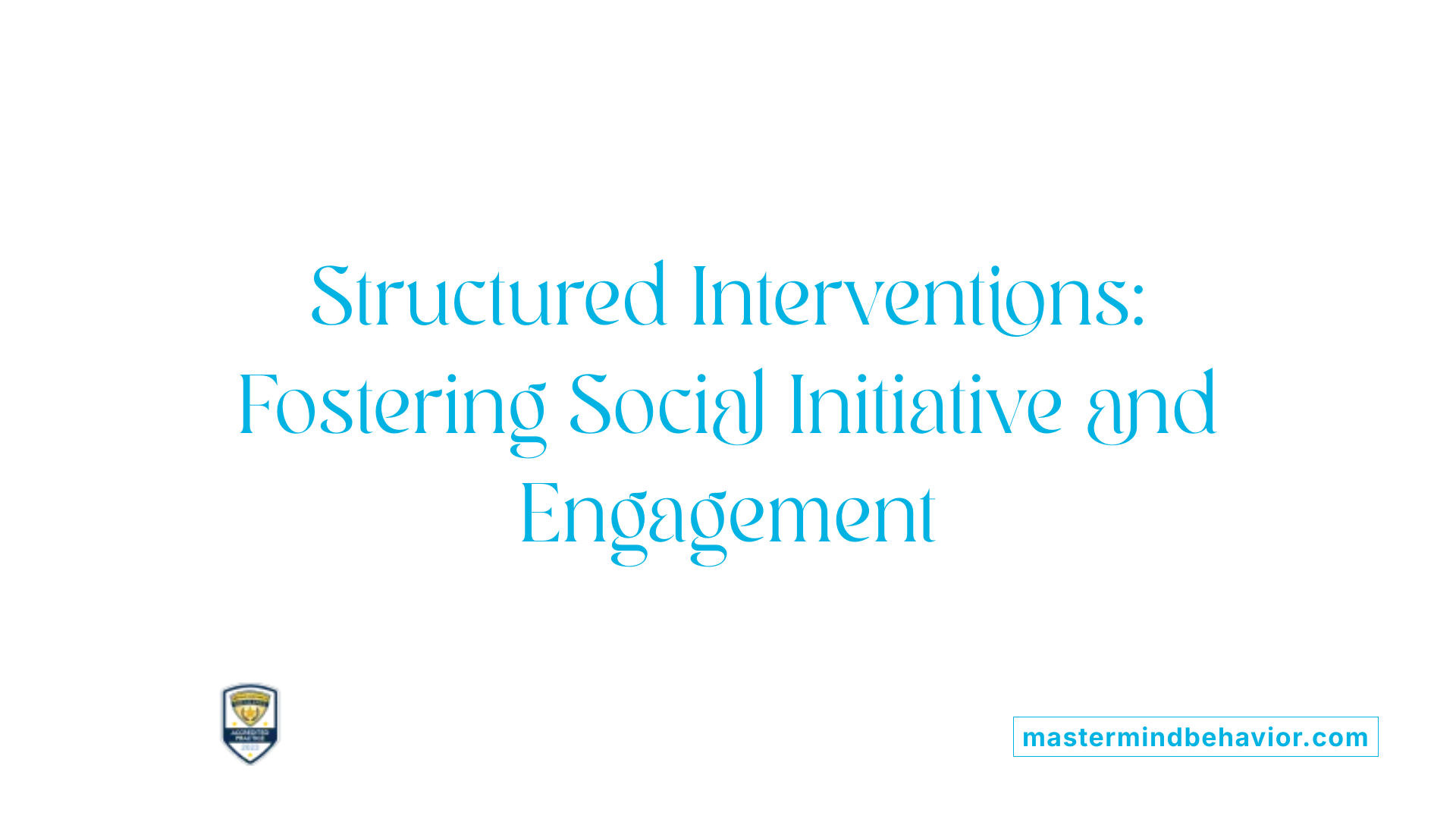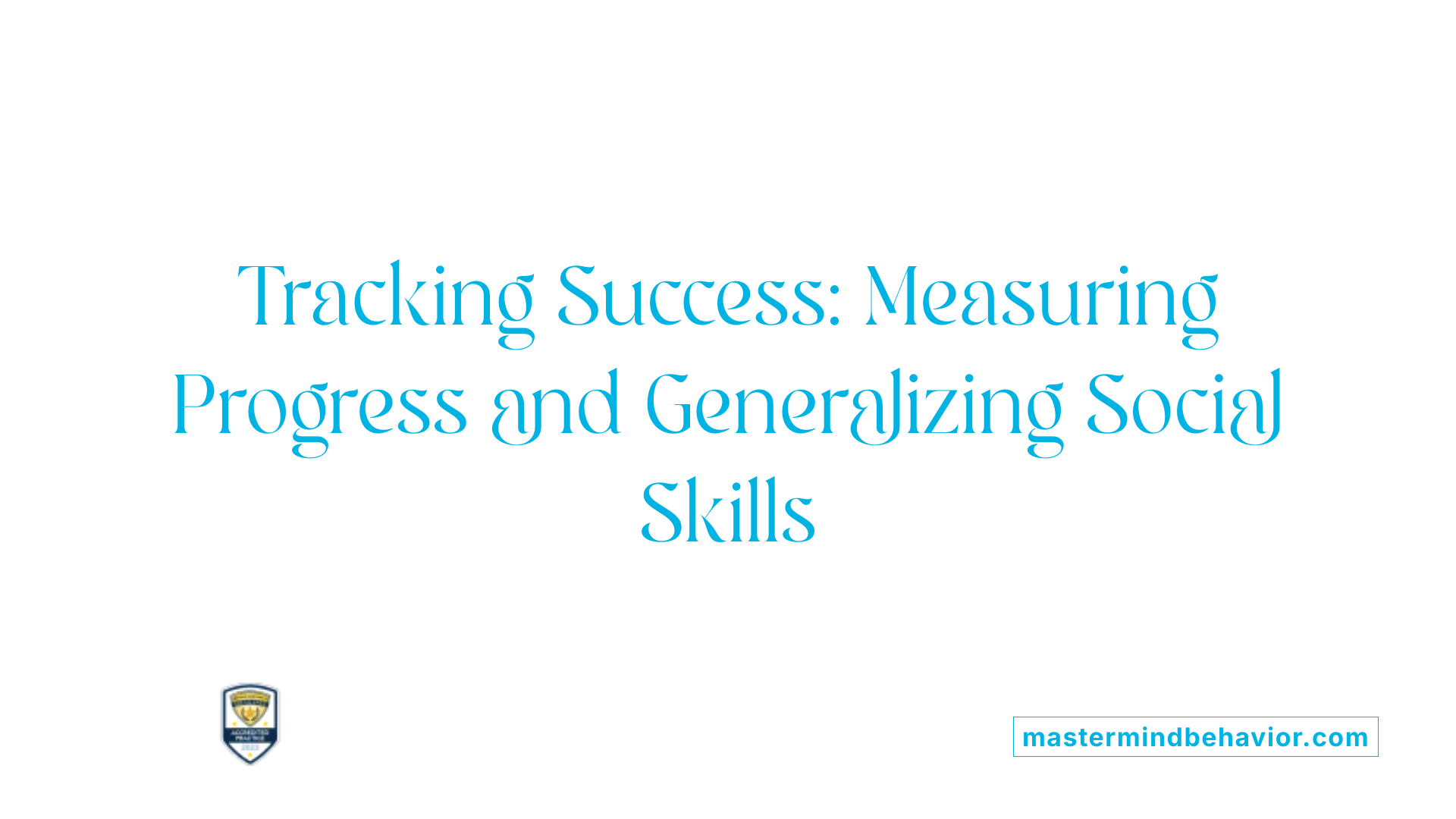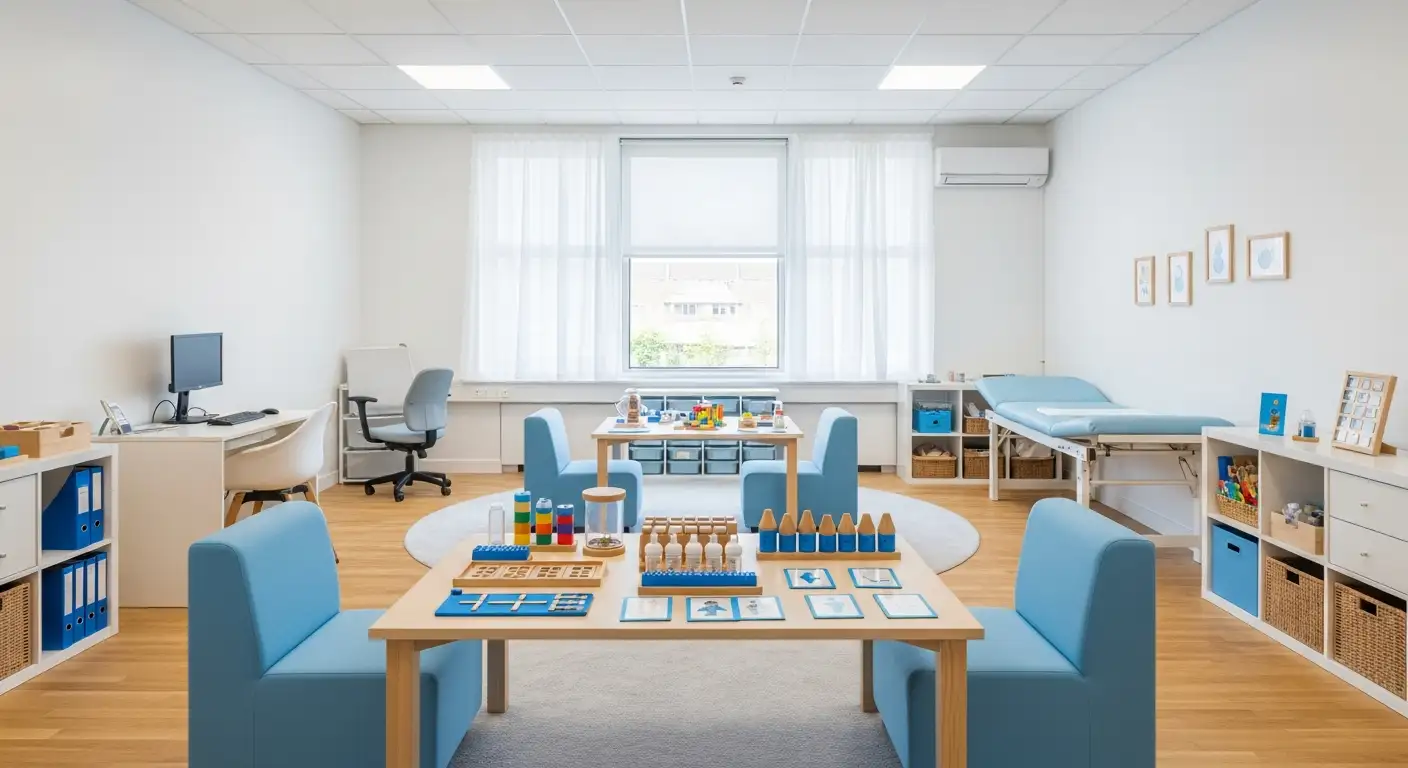How ABA Therapy Encourages Initiative In Social Conversations

Understanding ABA Therapy and Its Relevance to Social Interaction
Applied Behavior Analysis (ABA) therapy is a scientifically grounded approach that has revolutionized support for individuals with autism, particularly in enhancing social communication skills. By focusing on behavior modification through detailed analysis and evidence-based techniques, ABA therapy empowers children with autism to not only engage in social interactions but to take initiative in conversations. This article explores how ABA therapy encourages such social initiative, drawing from established research and clinical practices.
Defining ABA Therapy and Its Impact on Autism

What is Applied Behavior Analysis (ABA) therapy and how does it help individuals with autism?
Applied Behavior Analysis (ABA) therapy is a scientific, evidence-based behavioral intervention that focuses on improving socially significant behaviors in individuals with autism. Rooted in behavioral psychology, ABA analyzes how behaviors are learned and maintained through interaction with the environment.
The therapy aims to increase positive behaviors, such as communication and social skills, while decreasing negative behaviors. It employs techniques like positive reinforcement, prompting, and modeling to encourage desired actions and reduce harmful or challenging behaviors.
Each ABA program is personalized, crafted based on comprehensive assessments that consider an individual's unique needs, interests, and developmental stage. Qualified professionals develop individualized treatment plans to set specific goals and track progress.
ABA therapy plays a crucial role in teaching communication, socialization, language development, and self-care skills. It breaks down complex skills into manageable steps, such as making eye contact, turn-taking, and initiating social interactions, making learning less overwhelming.
Early and intensive application of ABA therapy has been shown to bring significant developmental benefits, including enhanced independence, increased self-confidence, and improved social integration. By emphasizing skill generalization, ABA helps individuals apply learned behaviors across various settings and everyday life.
Ultimately, ABA therapy empowers children with autism to engage more effectively with their communities and build meaningful relationships, supported by evidence-based strategies recognized as best practice by leading health authorities.
Qualified Professionals Behind ABA Therapy

Who typically provides ABA therapy and what qualifications do these professionals have?
ABA therapy is delivered by a team of trained and certified professionals with specific roles and qualifications. The most advanced providers are Board Certified Behavior Analysts (BCBAs), who hold graduate degrees in behavior analysis or related fields. Becoming a BCBA requires completing a master's program, accumulating supervised practical experience, and passing a certification exam administered by the Behavior Analyst Certification Board (BACB).
Supporting BCBAs are Board Certified Assistant Behavior Analysts (BCaBAs), who have undergraduate certification and assist with clinical tasks under the supervision of a BCBA. Their training enables them to implement components of treatment plans and contribute to ongoing assessment.
At the frontline of therapy are Registered Behavior Technicians (RBTs), who work directly with clients to implement strategies prescribed by BCBAs and BCaBAs. These technicians complete specialized training, supervised practical experience, and maintain certification through continuing education.
Many ABA professionals come from psychology, education, or related disciplines and undergo rigorous evidence-based training. Such qualifications are crucial because ABA therapy involves detailed behavior assessments, personalized intervention plans, and systematic teaching methods tailored to individual needs.
Role differences among professionals
- BCBAs design, oversee, and modify treatment plans.
- BCaBAs support BCBAs and assist with implementation.
- RBTs directly provide interventions and collect data.
Together, this multidisciplinary approach ensures comprehensive, effective, and ethical delivery of ABA therapy, highlighting the importance of receiving care from trained providers.
Core ABA Techniques Driving Social Skill Development

What are common techniques or strategies used in ABA therapy for autism?
ABA therapy relies on several proven techniques to enhance social skills in children with autism. One foundational strategy is positive reinforcement, which encourages desirable behaviors by rewarding them, thus increasing their frequency. This method helps children understand which social actions are valued and worth repeating.
Another important approach is task analysis, which breaks down complex social behaviors into smaller, manageable steps. This method simplifies learning by allowing children to master each step thoroughly before progressing.
Discrete Trial Training (DTT) is a highly structured technique that involves systematic, repeated trials to teach specific skills such as making eye contact or taking turns. This controlled approach allows therapists to focus intensively on particular social behaviors.
In contrast, Natural Environment Teaching (NET) promotes learning within the child’s usual surroundings, making skill acquisition more relevant and helping with generalization across different contexts.
ABA also employs modeling, prompting, and chaining techniques. Modeling demonstrates the desired behaviors for imitation, prompting provides cues to encourage the behavior, and chaining connects individual steps into complete social routines. These methods build independence gradually.
To support communication and social understanding, visual supports and social stories are frequently used. Visual aids, such as pictures or symbols, help children grasp social sequences and expectations. Social stories explain social situations clearly, preparing children to respond appropriately.
Together, these techniques create a comprehensive framework for teaching social skills, tailored to each child's unique needs. This personalized approach ensures effective learning and meaningful social development.
Encouraging Initiative in Social Conversations Through Structured Interaction

Breaking social skills into manageable steps
ABA therapy simplifies the complexity of social interactions by dividing skills into small, achievable tasks. For example, children may first learn to establish eye contact or say "hi," which builds confidence and reduces overwhelm.
Modeling social reciprocity
Therapists demonstrate interactive behaviors like taking turns and listening attentively. By observing these modeled interactions, children learn how to respond and participate effectively in social conversations.
Teaching imitation and turn-taking
Activities such as clapping or repeating words develop imitation skills necessary for recognizing and responding to social cues. Turn-taking is taught systematically, helping children understand conversational flow and mutual engagement.
Use of behavior-specific praise
ABA practitioners reinforce positive social behaviors with specific praise, clearly linking compliments to desirable actions like sharing or initiating interaction. This encourages repetition and helps children internalize social rules.
Structured social settings and clear expectations
Clinic-based ABA sessions provide a predictable environment where children know what to expect. This structure fosters comfort and confidence, making it easier for them to initiate and maintain social exchanges.
Tailoring interventions to interests
Personalizing interventions according to a child's preferences boosts motivation and enthusiasm, especially during peer play. This relevance encourages children to more actively engage and initiate conversations.
Together, these structured methods encourage children with autism to take initiative in social interactions by building skills step-by-step within a supportive, motivating environment.
Measuring Progress and Ensuring Skill Generalization

How is progress measured during ABA therapy sessions?
Progress in ABA therapy is systematically tracked through detailed data collection methods. Therapists record the frequency, duration, and intensity of specific behaviors using behavior charts and direct observation. This comprehensive approach allows for accurate monitoring of how well the child is meeting their targeted goals.
Standardized assessments like the Verbal Behavior Milestones Assessment and Placement Program (VB-MAPP) are frequently used to evaluate language and social skill development. These tools provide measurable benchmarks that help therapists determine if interventions are producing meaningful improvements.
Graphing techniques visually represent behavior trends and progress over time, making it easier for therapists and families to understand the child's development. In addition, anecdotal records and parental feedback provide important insights from everyday life, giving a fuller picture beyond clinical settings.
This multi-source data collection helps ensure therapy is responsive to the child’s unique needs and facilitates necessary adjustments to treatment plans.
How are social skills generalized beyond therapy sessions?
ABA therapy emphasizes transferring learned social skills into real-world environments. Techniques like natural environment training encourage the child to apply behaviors such as eye contact, turn-taking, and initiating interactions outside therapy.
Family involvement is crucial, as therapists collaborate with parents to reinforce skills at home and in community settings. This supports the child in adapting their abilities to varied social situations, increasing confidence and independence.
Social skills groups and role-playing exercises practiced during sessions prepare children to navigate peer interactions more effectively.
Ultimately, generalization ensures that improvements gained in the structured environment of therapy extend fluidly into daily life, enhancing overall social functioning.
Benefits and Considerations of ABA Therapy in Social Communication
What are the potential benefits and limitations of ABA therapy for individuals with autism?
ABA therapy is widely recognized for its positive impact on communication and social skills in children with autism. By using techniques such as positive reinforcement, modeling, and role-playing, it helps children learn essential social behaviors like making eye contact, turn-taking, and responding appropriately in conversations.
One major benefit of ABA therapy is the increase in self-confidence and independence it fosters. As children develop better communication and social interaction skills, they become more comfortable engaging with peers and participating in daily activities. These improvements also lead to stronger relationships and enhanced integration into social settings.
While ABA offers many advantages, there are considerations to keep in mind. The therapy requires a significant time investment, and the success depends heavily on individualized, ethical approaches tailored to each person's unique needs. Past practices sometimes used repetitive or aversive techniques, which have been widely discouraged in current standards. It is also important to acknowledge that some natural behaviors such as stimming can have positive functions for individuals, and efforts to suppress these without understanding may be harmful.
Overall, ABA therapy aims to support skill development and generalization across environments, ensuring long-term benefits such as improved independence, social skills, and quality of life. Family involvement and collaboration with educators and peers are critical components that reinforce learning and promote an inclusive atmosphere. When delivered respectfully and thoughtfully, ABA remains a powerful tool to help individuals with autism navigate social communication challenges effectively.
Family and Community Collaboration: Sustaining Social Growth
What is the role of family in reinforcing skills?
Family involvement is essential in ABA therapy for social skills development. Therapists work closely with families to teach and reinforce techniques at home, ensuring that children practice and generalize social abilities beyond the clinic setting. This constant reinforcement helps build confidence and deepens learning.
How does collaboration with educators and peers support social growth?
Cooperation between ABA practitioners, educators, and peers is crucial for promoting positive social behaviors. Teachers and peers in school environments help reinforce and model social skills, creating inclusive spaces where children with autism can practice and naturally develop social initiative.
How does ABA support inclusion?
ABA promotes inclusion by teaching children social cues, turn-taking, and appropriate interaction strategies, empowering them to participate meaningfully in various social settings. Structured social environments guided by ABA principles provide clear expectations, making children feel comfortable and confident during peer interactions.
What are social skills groups and personalized stories?
Social skills groups offer children a supportive forum to practice social behaviors with peers under professional guidance. Personalized teaching stories, like Social Stories, use narratives tailored to individual experiences to explain social norms and expectations, helping children understand and navigate social situations more easily.
How does ABA build confidence for spontaneous interactions?
By breaking down social skills into manageable steps and encouraging generalization across settings, ABA enables children to apply learned behaviors in spontaneous real-world interactions. Positive reinforcement and behavior-specific praise further boost self-confidence, encouraging children to initiate and sustain social engagement independently.
Transforming Social Conversations: ABA Therapy’s Lasting Impact
ABA therapy represents a cornerstone in supporting individuals with autism to develop meaningful social communication skills and confidently take initiative in conversations. Through evidence-based, structured interventions tailored to unique needs, ABA fosters skill acquisition, reinforces positive social behaviors, and generalizes these skills to everyday life. The collaboration of qualified professionals, families, and communities ensures a supportive environment that welcomes growth and inclusion. While mindful of its limitations, ABA continues to offer transformative benefits, empowering individuals with autism to engage more fully in social worlds and achieve greater independence.
References
- How ABA Therapy Improves Social Skills in Children With ...
- How ABA Therapy Supports Behavioral Change
- Behavior Interventions | Applied Behavioral Analysis
- Peer Play: Facilitating Positive Social Interactions for Autism
- Step-by-Step Guide to Enhancing Social Skills in Autism
- Applied Behavior Analysis (ABA)
- Types Of ABA Therapy Jobs And Their Degree Requirements
Recent articles

Understanding Functional Communication Training (FCT) In ABA Therapy
Unlocking Communication: How Functional Communication Training Transforms ABA Therapy

ABA Therapy To Reduce Argumentative Behavior In Children
Transforming Challenging Behaviors: The Role of ABA in Autism Care

Teaching Independent Decision Making Through ABA
Unlocking Autonomy: The Role of ABA in Fostering Independent Decision Making

The Role Of ABA Therapy In Supporting Children With Social Challenges
Unlocking Social Potential: How ABA Therapy Empowers Children with Autism

The Role Of ABA Therapy In Developing Self Determination Skills
Unlocking Independence: How ABA Therapy Empowers Self-Determination in Autism

ABA Therapy For Supporting Flexibility In New Social Groups
Enhancing Social Adaptability in Autism Through Applied Behavior Analysis



